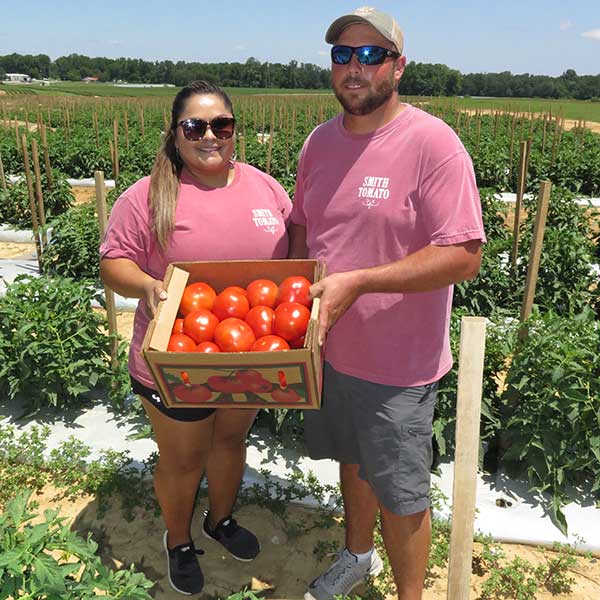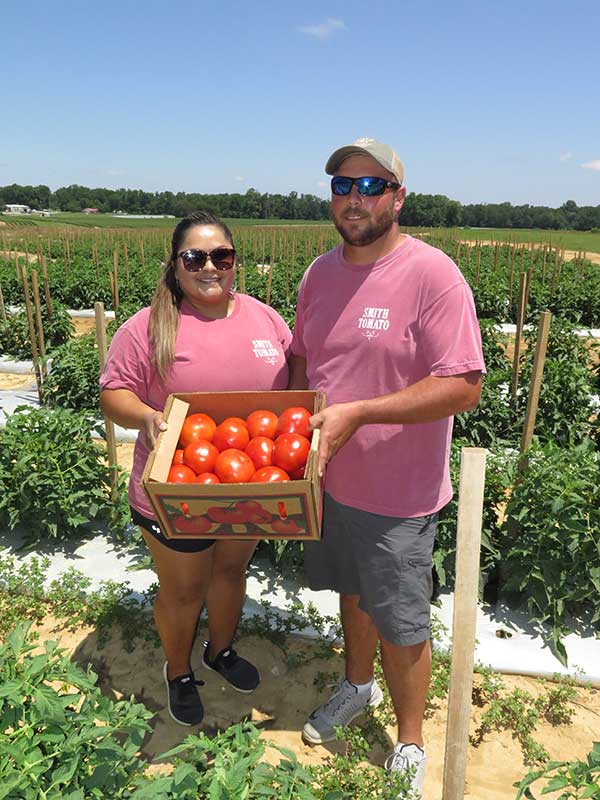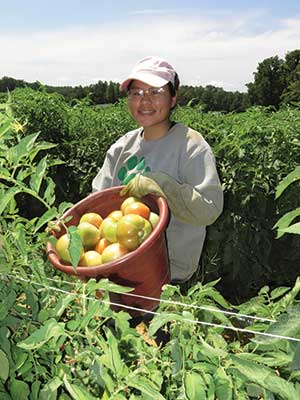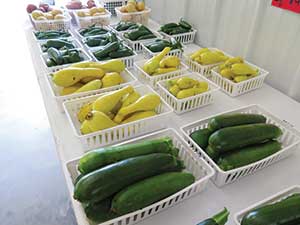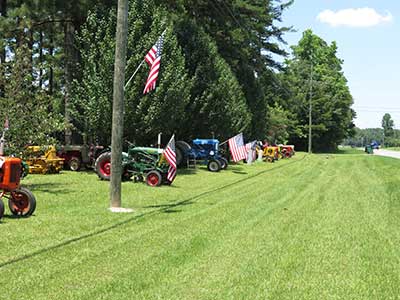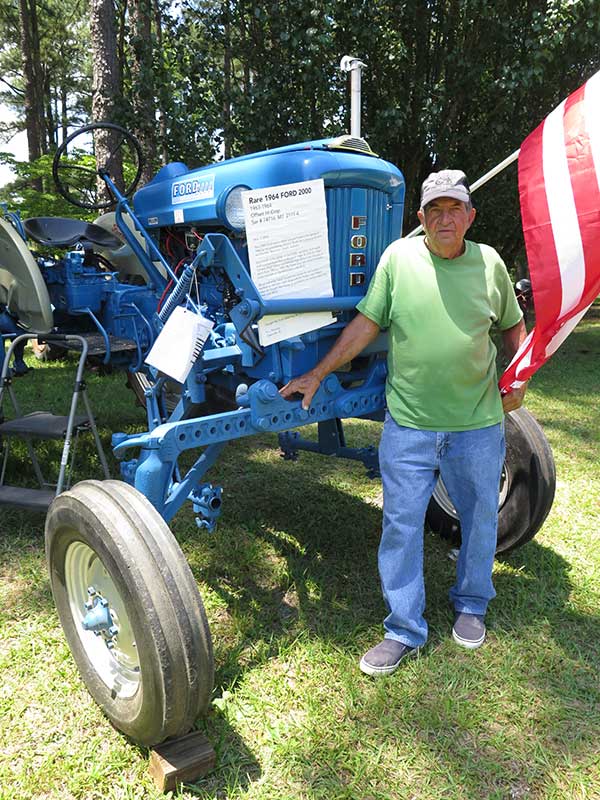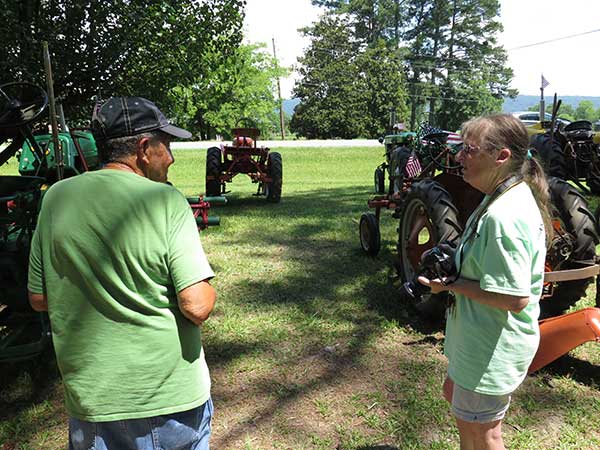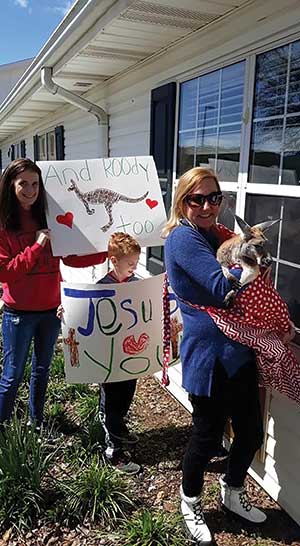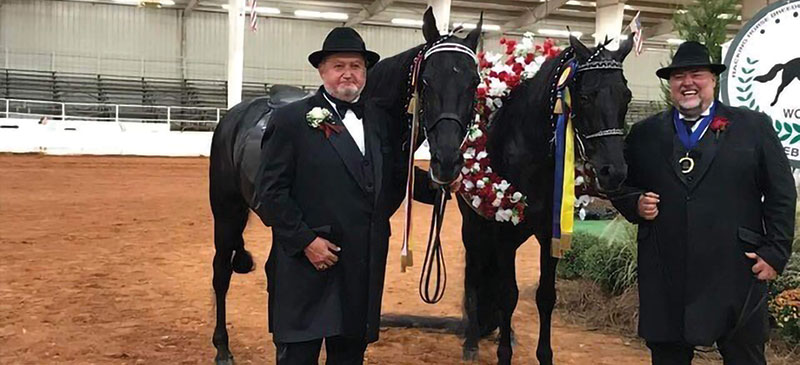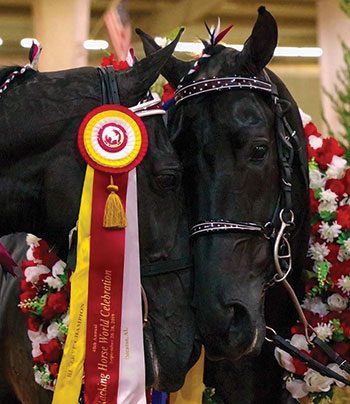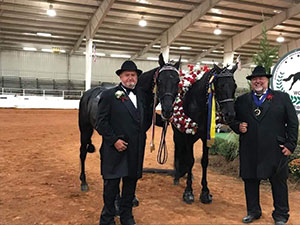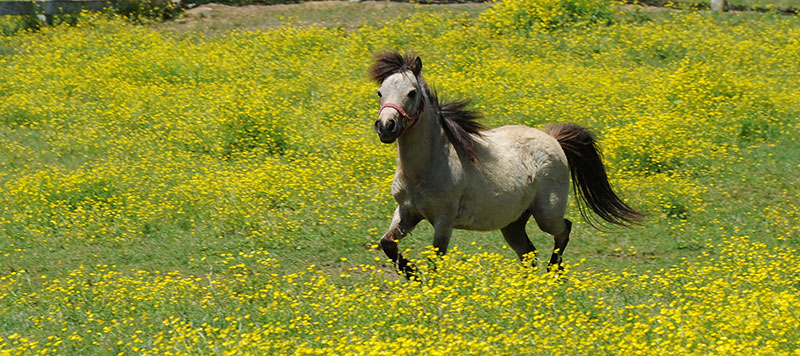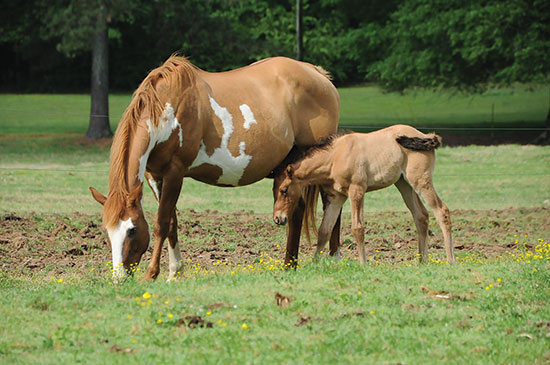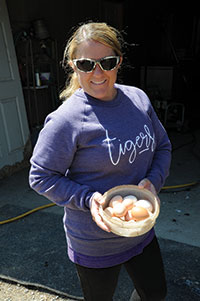Growing a bounty to serve others
Story by Carol Pappas
Photos by Carol Pappas
and Graham Hadley and Glenn Wilson
Much like the single seed planted years earlier that grows into the towering oak tree offering shade and comfort to next generations, today’s Pell City Gateway Community Garden thrives as an example of what dogged determination, a patch of dirt and a smattering of seeds can become.
In 2013, a handful of Pell City citizens envisioned a garden for their community. In that group were Merry and Dave Bise, Renee Lilly, Lisa Phillips, Kelly and Sheree Wilkerson, and other community volunteers. Taking root on the old Avondale Mills property, the garden on a quarter-acre plot was small, but productive – just like their dream. Early help came from Pell City Civitans, which provided the nonprofit status they needed for grants, and the City of Pell City, which provided the patch of earth they needed to grow their bounty, and it began to sprout.
Seven years later – in a new location thanks to St. Simon Peter Episcopal Church – and a growing army of volunteers, Gateway Community Garden is reaping the benefits of what it sowed by helping others.
Early mornings and late afternoons nearly all year long, you’ll find a group of “do-gooders,” city dwellers on a mission, toiling in the dirt, nurturing their crops to feed the hungry.
Row upon row tells the story of their bounty – potatoes, okra, squash, bell peppers, corn, tomatoes, butter peas and pinkeye purple hull peas in summer. Collard greens, cabbage, turnip greens, broccoli, sweet potatoes and more okra emerge in the fall.
Fruit trees and bushes abound – apples, blueberries, blackberries – a future dream now in its fledgling stage. An irrigation system is in place. A greenhouse, courtesy of Master Gardeners, has been erected. And on any given day when the sun is out, chances are these gardeners are, too, watching over their harvest like protective parents tending to their young.
Debbie Smith, a longtime gardener and board member, calls it “God’s blessing. It is always amazing to me that you plant a seed in the ground and get this beautiful plant that feeds others.”
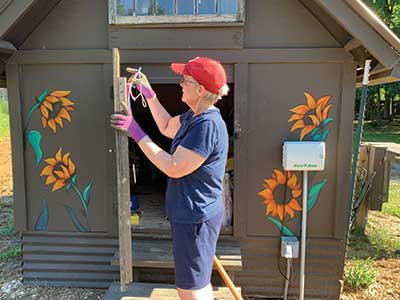
Her experience as a gardener is rewarding in the way she is able to use her education background to teach others how to plant, grow and harvest. She describes the end result – whether it’s someone enjoying the garden’s solitude and beauty or actually laboring in the soil as a “healing and restorative garden. It works on both ends.”
Worth Barham, project manager who fellow volunteers have labeled ‘CEO,’ agrees. “It’s a wonderful experience,” he said, noting that the whopping two tons of food grown there so far have made their way to good homes in the Pell City Christian Love Pantry, Pell City Senior Citizens Center and Lincoln Food Pantry.
“Everything is based on the wonderful volunteers we have,” Barham said. Bringing different skillsets to the organization, they have been able to write grants, develop an educational component, bring community organizations into the fold, design the garden’s physical future and of course, grow food for the needy. St. Clair Co-op has provided many of the plants. David Wadsworth brings his tractor to clear the ground for planting, and Master Gardener Tom Terry tills the soil.
“Without the grants we have received, we would not be where we are today,” Barham said. “Without our volunteers, we would have no organization at all.”
Lisa Phillips became involved early on – first as a Pell City Civitan, then as a gardener. In addition to the Civitans lending their 501(c)(3) nonprofit status to the fundraising effort, the club has provided access for the handicapped and special needs, like accessible paths for wheelchairs and lower tables for produce.
To be a part of it has been “a great feeling,” said Phillips. “And I think it has been great for the community.”
“I am awestruck at what we have been able to accomplish with a small group of folks,” said Linda Tutwiler, another board member. Volunteers only number a dozen or so on a regular basis. “I don’t think any of us envisioned what we could accomplish in such a short time.”
In 2017, it moved from Avondale to a 5-to-6-acre plot given to them to use by the Episcopal church across the street. And that is when the garden grew to its next level and beyond. First helped by a Community Foundation of Greater Birmingham grant and then a Community Foundation of Northeast Alabama contribution as part of its Sacred Places grant program, the garden began to really take shape.
Three years ago, Barham said, the garden grew 820 pounds of fresh produce to give to those in need in Pell City and St. Clair County. Last year, it was 3,600 pounds. Today, their harvest tips the scales at 4,000 pounds.
Nearby is a newly constructed nature trail. A handcrafted, oversized sitting bench underneath the trees welcomes one and all as a place for quiet reflection. A journal to record thoughts is there, as is a miniature reading library. Peace, tranquility and reflection are key to this sacred space.
A greenhouse is home to trees that grow Meyer lemons and will soon grow plants from seed. A shed painted with brightly colored sunflowers holds tools of the trade and a work log, where volunteers record their hours for grants.
On a Saturday morning in November, a group of Scouts marveled at gardener Laura Wilson’s lessons of how sweet potatoes are grown, how to pick a turnip or cabbage leaf. They ran through garden patches with prize in hand – a freshly picked turnip – with smiles almost as wide as they were tall.
They earned a badge that day. But more important, gardeners will quickly tell you, is they learned the value of growing a garden with your own hands and what it can provide in life – not just for you, but for others.
Renee Lilly, one of the founders, talked of the personal rewards reaped in those lessons for her and her husband. “It’s a wonderful experience for me. My husband is involved, too. It’s a great thing for the community, and I’m excited the word is finally getting out,” she said, encouraging others to join them in the effort. “It really does take a village.”















